Hello my Dear Friends,
I want to talk to you about something that has been on my heart and mind for months. Let’s talk about FOOD SECURITY during these uncertain times . . . or in other words, making sure you and your family have the food you need when commercial stores aren’t reliable. These times are uncertain but one of the most important ways to stay safe and healthy, is to put GOOD food into our body. In the last few months, depleted grocery stores shelves have caused FEAR and apprehension for many. I know I felt it and we are more stocked than most. So let me see if I can HELP point you to a more sustainable and secure food supply when commercial stores are not an option!
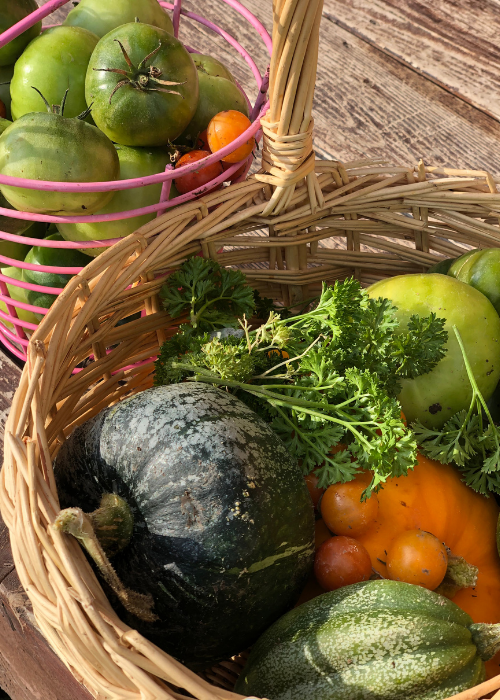
Disclaimer: I would like to preface this post by stating that I do not have any affiliate links. I do not make any commission for referrals from posted links. I’m simply sharing resources that I have collected over the years. Not everyone has the same food convictions I do and not all can “afford” to purchase local foods. I do realize this. Our community is such that food banks and public assistance is readily available. I am so thankful for that. No matter where we acquire our food, I believe there is always more we can learn about where our food comes from. Can you take even one little nugget of info, put it in your back pocket just in case these systems fail to serve the need!?
Meat
I live in Montana and couldn’t start a conversation on gathering healthy meats without talking about farming, ranching and hunting. If you are vegetarian skip to the next section and if you are vegan skip to the end. Just know you are all welcome regardless of your food convictions. Healthy, naturally organic, wild meat is a BIG part of our food security.
We are hunters and many of our family members are farmers and ranchers. Wild game happens to be abundant where we live and we are thankful for that. We also believe that if we are going to eat meat, it is important that our children know EXACTLY where it comes from and how it is acquired. It is also important to understand the sacrifice both the harvester and the animal make for us to consume the end result.
Taking an animal’s life is NEVER easy nor is it made light of.
We would be remiss to allow our children to believe that chicken or beef is made in some obscure factory. . . or that chocolate milk comes from brown cows. So we hunt, ranch and farm. We bring our children along for the process and teach them about every aspect of what it means to be a meat-eater. My biggest piece of advice to “beef” up a secure source of meat, is to get to know LOCAL hunters, fisherman , ranchers or farmers. I don’t have access to seafood. But if you live in a coastal town, I would imagine sourcing seafood would be much like sourcing other wild meats.
Talk to locals. . . friends at your church, school or work and figure out where they get their meat. Locally grown and harvested game or seafood is as natural and organic as it gets. What animal species are available in your area? Ask around and do your research.
What can you do to find sustainable and local sources of meat?
- Learn to hunt or get in touch with hunters in your area. Click Here to find a Hunter’s Education Course in your area. Now hunting is a skill and can take years to master. I would definitely recommend finding a mentor if this interests you. Also consider that tags and licenses are usually necessary to harvest wild animals.
- Talk to local meat processors or butcher’s shops. Often they take in wild game or farm animals and will sell meat by the cut. It is true that this can be a bit more expensive. However, when grocery shelves are empty, I would wager to bet we would all pay a bit more. STOCK UP NOW. Properly packaged meat freezes well and can last up to 2 years or longer!
- Raise your own meat: While I wouldn’t recommend jumping right into raising animals if you NEVER have, it is possible to raise meat on small plots of land. You can raise a small batch of meat chickens, ready for the freezer in as little as 8-9 weeks. Another animal raised in a small area, with little input is rabbits. The butchering process is a whole other story and may not be for everyone. Make sure you have a plan with a meat processor ahead of time if this is not something you want to do yourself.
Check out this video if raising chickens in a small area interests you. This year, I hope to raise a small group of meat birds myself on less than 1/2 acre of green grass. I will be blogging about that so follow along for that journey!
Align yourself with local hunters, fishermen, ranchers or farmers.
So hunting is not for you?! That is OKAY. In fact, I personally am not a big hunter even if most of my family enjoys it. If you choose NOT to hunt for yourself, see if you can locate a hunter in your area. It may be that hunters have excess game you could acquire for a minimal fee, free or trade.
Get to know farmers in your area. Talk to the people around you or even consider placing an “In Search of post” in your local Facebook Marketplace. You would be surprised what kind of leads you get! Then go VISIT the farm and see the animals for yourself. Take your kids and teach them as you go.
Need more help finding local meat sources?!
If you live in an area where hunting and fishing just isn’t a thing and farms are not local (i.e. within 2 hours). . . I still recommend sourcing meat as local as possible. Buying food from local producers helps to keep your money working in your own community.
Check out Eatwild to help source by state grass-fed meat, eggs and dairy products. This is a great site, designed to help you connect with local farmers and meat producers. Many of these producers are Certified Humane in their practices. Even if you aren’t ready to purchase an animal by the whole or half, this site can help you find meat by the cut. You can even find farms that ship to you.
Remember!
Cheap prices we pay for our meat in supermarkets reflects the quality of the product we receive. . . it is CHEAP. Non-commercially grown meat will typically cost more. This cost directly reflects quality and ALL the individual work that goes into raising and processing a healthy animal.
When you make a connection with a desirable source for meat, stock up as much as your budget allows. Often when it comes to purchasing a large farm animal (cow or pig for example) you can purchase by the whole, half or quarter. Whole animals are delivered by the farmer to the butcher shop. You then choose how you would like the animal processed. This means you can choose the cuts of meat your family would like. Don’t worry the butcher should walk you through this process! You can then pick up your meat supply.
I can tell you there is no better feeling than picking up a year’s worth of meat for your freezer.
Oh! make sure you plan for freezer space BEFORE you pick up the animal . . . this saves a lot of frustration and aggravation later . . . just ask me how I know.

If you don’t have a freezer, meat can be dried or even canned. I will be posting a recipe for preserving meat and fish by pressure canning soon! It is practical, easy and delicious.
Eggs

We eat a lot of eggs! Even if we didn’t have a freezer full of local beef and wild game, I would rest easy if I had a regular supply of fresh eggs. I love animals and I LOVE LOVE chickens. My husband thinks they are ugly but I don’t know, I just think they are so cute and smart. He disagrees on both regards.
Just like meat, I would recommend finding a LOCAL or as local as possible source for your eggs.
Is having chickens an option for you?
Keeping laying hens is relatively easy. They require very little space and from about 6 months of age to 18-24 months you can depend on 1 hen giving you approximately 1 egg per day. They also give you infinite amounts of joy in their being! Can you tell I love chickens!?
A good rule of thumb for a chicken coop is about 2-3 square feet per hen. So in a relatively small pen you could house enough hens for 2-3 dozen eggs per week! Sign me up!!
The Coop!
If you have the money to spend, I just love these handcrafted hen homes by Cutest Coops. They are on the more expensive side but absolutely ADORABLE. I can’t even!!

You can also purchase coops more reasonably priced from your local garden supply or ranch and home type stores. I recently saw this Rugged Ranch Pueblo chicken coop at our local North 40 store. It holds up to 10 birds for around $500, for a more medium price point.
Whatever route you go, make sure their coop is safe and offers predator protection. All kinds of critters, including the family dog love to kill and eat chickens.
We recently moved and sadly I had to leave all my beautiful chickens behind. We will be building a new coop and raising new chicks this spring. Stay tuned for this as well!! If you would like to build your own coop check out some really great and creative chicken coop design ideas here.
Considerations if you plan to keep chickens.
They do slow down production around the 2 year mark and do eventually stop laying. Will you keep these free-riding chickens as pets or will they end up in the stew pot?? Also consider you have to feed and water them. A 30# bag of good quality chicken feed will cost you anywhere between 25-40 dollars. They also need easy access to fresh clean water.
Full Disclosure: It is not CHEAP to raise your own eggs. There is time and animal care costs involved. But again do we really want CHEAP food? Our aim is to establish a reliable and secure food source. If you don’t have access to eggs in your grocery store, where will YOU turn?
Okay so let’s consider that many of you are not in love with raising your own hens. Here are some options for you all:
- Talk with other families (at church, school, work etc) Where do their get their eggs?
- Ask your local Facebook Marketplace: “Anyone know of local eggs for sale?”
- Use the resource previously given for Eatwild.com or try LocalHarvest.org. These sites allows you to put in your location and search for local Farmer’s Markets, shops, farms and CSA’s. Not only can you source eggs but some meats and produce as well.
Hey Kassy what is a CSA?
I am so so glad you asked!
- CSA stands for Community Supported Agriculture
- It is a food production and delivery system that connects farmers to consumers
- People subscribe or buy “shares” of a farm’s harvest in advance. A portion of the crop harvested is delivered to you
- Farmers earn money pre-season to help them get their growing season started by producing food for you.
- Barring disaster you enjoy overall lower food costs and first dibs access to fresh from the farm, high-demand fruits and veg.
- Annual or quarterly buy-in is typically required. Your food may be delivered weekly. Some farms even may have u-pick days.
- Participating in a CSA not only helps grow food for your family but also directly supports and grows the farmer’s business!
Again try LocalHarvest.org to find CSA options in your area. Also try good ole’ Google for Farmer’s Markets in your area. Talk to the people running the stands and ask them if they have a CSA option.
Egg Storage
You can store farm fresh eggs, unwashed at room temperature for 1-3 weeks. If you have more than you will eat in a couple weeks, you can keep them in the refrigerator for 5 weeks or more.
You can always check eggs that you are unsure about by floating them in cool water. .
- If the egg floats it is no longer fresh.
- It’s very fresh if it sits sideways at the bottom.
- If it stands on end at the bottom it is less fresh but still OK.
You can also crack eggs into a freezer safe container and freeze them for up to a year. Thaw them in the refrigerator and use in baking. You can scramble them and even fry them but the texture and flavor is not like fresh. However, this would certainly be acceptable in a food scarcity situation. For a even longer storage option check out this limewater method of egg storage.
Dairy
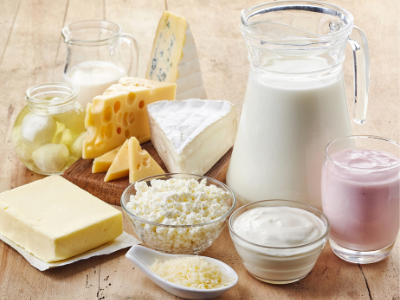
Dairy is a large part of our diet as well and has me spending a lot of time lately researching local sources of dairy. Thankfully no one in my family has any problems digesting milk or other dairy products. Dairy and RAW milk specifically has been highly controversial through the years. It is difficult to talk about sourcing local dairy without discussing RAW milk versus pasteurized milk.
First a bit of dairy history for you. . .
Milk contamination in the late 19th Century was considered a major public health problem. As people moved out of the country and into cities, milk from farms had to be transported long distances. Spoilage was a big problem without refrigeration. Milk that was being produced closer to the cities wasn’t any better. In an attempt to maximize profits, cows were kept in terrible, unsanitary conditions and fed poor quality food. The resulting milk was of poor quality milk too. To improve the look of the “swill milk” local distributors would add all kinds of terrible things including chalk, eggs, flour, water, molasses and other substances. This toxic substance was marketed as “Pure Country Milk”. Sadly, it was from it and made many people sick. Some even died.
FDA Regulation of milk
The safety of milk was a regular public concern. Because of this, the FDA regulated against drinking raw milk. Louis Pasteur, French biologist, microbiologist and chemist developed pasteurization, a process of heating a substance to kill disease causing bacteria. In 1908, pasteurization of milk became mandatory in cities like Chicago.
In 1947, Michigan became the first state to require pasteurization of all milk sold. Shortly thereafter, The FDA made purchase of raw, unpasteurized milk illegal in all states.
Many of these strict Raw Milk Laws we see today, even in Montana, are leftovers from all this food adulteration and controversy. As you know animal care standards, food handling preparation and refrigeration has all resolved many of these problems.
Different types of pasteurization:
Standard pasteurization
AKA HTST or high temperature short time processing involves heating milk to 161 degrees F for 15-30 seconds before it is quickly cooled. Pasteurized milk is “cooked” and therefore lacks digestive enzymes and probiotics that help us digest it properly.
Ultra high temperature
UHT or simply “ultra” pasteurization involves heating milk to 280 degrees for 3-5 seconds before it is rapidly cooled. This type of milk is so “dead” it’s actually considered shelf stable for 6-9 months. UHT milk has a decidedly “cooked” flavor and lacks digestive enzymes and probiotics. Many organic milk products are UHT processed or “ultra” pasteurized to avoid early spoilage because they are more expensive to produce. Is “ultra” really better? You decide!
Lower temperature longer time pasteurization
Lower temperature pasteurization, also called VAT or batch is seeing a resurgence in small family farms. In VAT pasteurizing, small batches of milk are heated to 145 degrees F for 30 minutes to kill harmful pathogens but leave many good PRO-biotics intact. VAT pasteurized milk tents to be closer to raw milk in good proteins, fats, enzymes and probiotics. Because the fat is left intact VAT pasteurized milk is non-homogenized, resulting in the yummy “cream on top” separation.
Will you source Raw or Pasteurized milk?
I love milk so much that pasteurization and especially ultra high temp just sounds unnatural and so sad. From a food security standpoint I suppose having a shelf stable milk sounds good but you would have to check your own health convictions about that.
The choice to drink raw versus pasteurized milk is a personal family choice but just know pasteurization isn’t all its cracked up to be. I believe all the restrictions and laws back in the early 1900’s had our best interest at heart. I don’t not have to tell YOU that things have changed.
Raw milk when handled appropriately has been found to be quite safe and nutritious.
Raw milk is full of natural enzymes and probiotics that help with digestion. Pasteurized milk is often difficult to digest for this very reason. I won’t say much more on that subject other than do your research on raw milk. Email me directly if you have more questions.
I would strongly encourage you to check out A Campaign for Real Milk by the Weston A. Price Foundation to learn facts about real raw milk. Also learn what is happening with milk laws state by state and so much more!
If you can’t find raw milk go for VAT or low temperature pasteurized milk.
Lower temperature pasteurization called VAT, batch or low temperature, is seeing a resurgence. This method kills bacteria but keeps some digestive enzymes intact. Flavor tends to be preserved and also does not harm the fats in milk therefore you will see separation of the fat or cream from the milk. Milk is often labeled as “Non-homogenized” or “cream on top” milks. This would be then next best option to raw milk.
Whew! that was a lot of info! At the very least I would encourage you to know the history of milk, risks and benefits of raw milk and know where the milk you choose to drink comes from.
TRY THIS LINK TO ENTER THE DAIRY CODE ON YOUR MILK PRODUCT (INCLUDING ICE CREAM) TO LEARN WHERE YOUR MILK CAME FROM.
You CAN pasteurize your milk at home.
I have never done this myself but if you are more comfortable with pasteurized milk you can do it yourself. In fact even if you have your own milk cow, some recipes (like yogurt) recommend you start with pasteurized milk and add specific pro-biotic cultures in order to come out with a more consistent product and avoid contamination.
Here is what I could find about home pasteurization of milk from Oregon State University Extension Service.
Okay, Okay so what are our options for a secure dairy source?
Family Cow
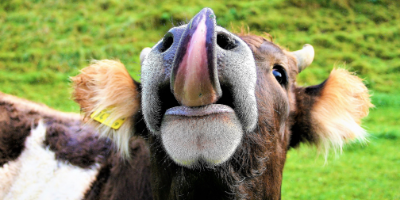
Own a dairy animal! So maybe you can’t keep your own cow and milk her twice or even once a day. . . Can you own a diary goat?
Goats are much smaller, don’t eat as much, are easier to handle, need smaller pens, less substantial fencing and and give less milk to deal with. A seasoned dairy cow could average up to 7 gallons per day but a goat may be more manageable at 1 to 1-1/2 gallons per day.
Herd Share
Aka cowshare, farmshare, goatshare etc. . . is where you basically buy a share of a milking animal and pay the farmer to care for and milk the animal. Much like a CSA the farmer may deliver directly to you or have a central pickup point.
Typically a “share” is sold by the amount of milk an animal is estimated to produce. For example if “one share” is one gallon of milk but your family needs 2 gallons for the week, you may need to search out a herdshare that offfers 2 shares. Read more about heardshares here.
Local neighborhood farmer

Use the REAL MILK FINDER to search for dairies or herdshares by state. Remember that even if your state does not “allow” purchase of raw milk, check a neighboring state.
For example: I cannot “legally” purchase raw milk for human consumption in Montana but I am only 45 minutes from Idaho and can purchase raw milk right from the local grocery store. Crazy Right?!
Some farmers will also sell RAW milk for “pet consumption” as a way around State regulation but this is not reliable. Whatever you choose visit the farm, see how animals are cared for and observe milking procedures. It is very important that raw milk is kept clean!
Local family dairy doing direct sales
Today many family dairies sell raw milk to state processing plants. However, some family farms have chosen to go back to their roots and process their own milk according to state regulation.
Pasteurization at these facilities is state certified but done in small batches, typically using the VAT method that maintains optimal nutritional value, digestibility and flavor. A great option for a product that is local and sustainable!
Google “family dairy near me” to find options near you! Kalispell Kreamery is close to us and has great products.
Storing Dairy Products
Typically consuming dairy fresh is best. You can make other products such as cheese, butter, cream cheese, sour cream, yogurt or the fermented milk drink kefir. These products can provide variety and extend the life of your milk.
You can also freeze milk, raw milk or butter. Dr Weston A Price, author of the nutritional classic Nutrition and Physical Degeneration, found that even after frozen for one year butter suffered no degradation of either enzymes or fat-soluble vitamins.
Even through freezing, enzymes that help your body digested dairy are typically left intact. Freezing does change the taste and texture and may be most suitable for cooking and baking and less so for drinking. Also, some beneficial bacteria may be destroyed but from a food security standpoint, frozen milk as a backup is certainly an option.
Caution: Use a freezer safe container and allow for head-space
If you do choose to freeze your milk use a freezer safe plastic container or glass jar. Be careful with glass as it may break as the milk expands. Just be sure to leave enough head space to allow for this. Defrosting milk in the refrigerator is best but may take 12 hours or more. For quicker thawing you can run under cold water, gradually increasing temperature. Don not thaw at room temperature and NEVER refreeze milk.
Fruits/Veggies & Herbs
In learning about how to acquire an egg supply, we learned about CSA’s or Community Shared Agriculture. This is a very valuable tool to source not only eggs but veggies, honey, flowers and even poultry. Sourcing local fruit and veg can be difficult in the winter for us Northerners. It is best to grow or collect these foods in summer and fall to preserve for the winter. Local farms, orchards or farmer’s markets are a great source for acquiring these items in season.
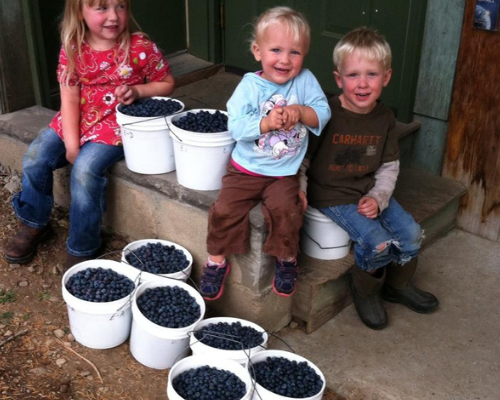
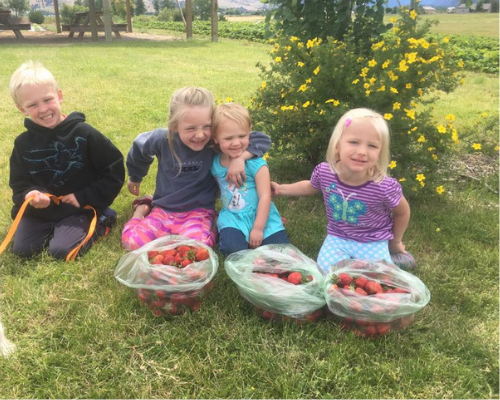
I particularly love u-pick farms both for the price point and also because I love to teach my kids the value of and work it takes to acquire their own foods. As a bonus, I find they appreciate their food more and tend to eat it better when they have been involved in collecting it! Score for Mom!
Read (aka google) what fruits and vegetables grow best in your area. Research local foods that can be foraged or again LocalHarvest.org is a great resource for locating farms, CSA’s and Farmer’s Markets near you.
Grow your OWN food to provide a SECURE food source for your family
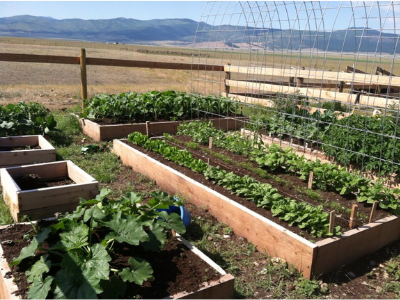
Talk about the ultimate in food security. Grow your own garden! I cannot tell you how wonderful and self-filling growing your own food is. You don’t even have to have a lot of space or even plant a lot of different things to make a huge impact on the sustainability and security of your vegetable supply.
Salad greens and spinach are super easy to grow. You could even do this inside on a sunny window sill or outside in a container or planter.
Here are 7 veggies that are super easy to grow in containers. Try one this year!:
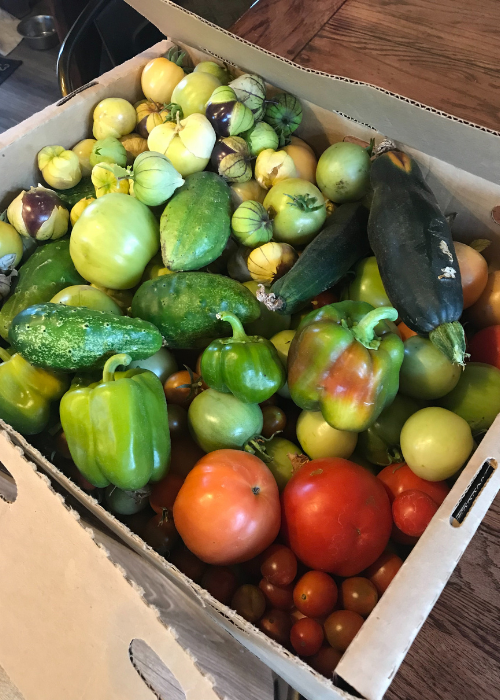
- tomatoes
- radishes
- zucchini
- peas
- cucumbers
- peppers
- potatoes
Because we live in Montana fruits, veggies and herbs are not readily available year round. My go to method of preserving these foods is freezing. Some nutrients are lost in this process but overall it is a easy and great way to have secure access to these items year round.
Food Security: Preserving the Harvest for Uncertain Times
Freezing
For example, when I am tired of processing tomatoes for sauce and salsa in the summer I wash them, pop them whole into freezer Ziploc bags and simply toss in the freezer. Other veggies such as broccoli, cauliflower, peas and carrots can be blanched or quickly dunked in boiling water then placed in ice water, drained and placed in freezer bags. I like to shred and freeze bags of summer squash for easy access for zucchini bread, muffins or even cakes.
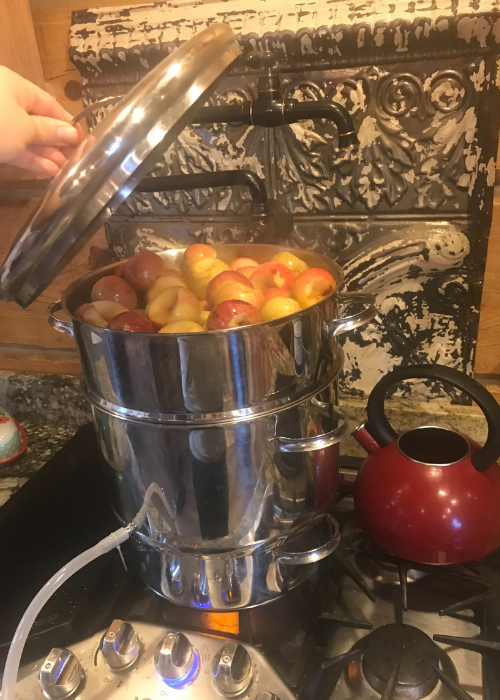
Fruits and berries can be gathered or foraged from local orchards or farmer’s markets. My favorite methods of preservation for berries is freezing in freezer bags along with canning jams and jelly. Apples can be turned into sauce and canned. Pears and peaches can be sliced and frozen and/or canned.
Canning
High acid fruits and vegetables such as tomatoes and stone fruits can be water bath canned. However, low acid foods such as corn, potatoes meat etc. must be PRESSURE canned in order to prevent deadly bacteria from forming in your end product. . . it isn’t as scary or hard as it sounds if you follow some basic rules. Checkout your local extension office for more info on canning.
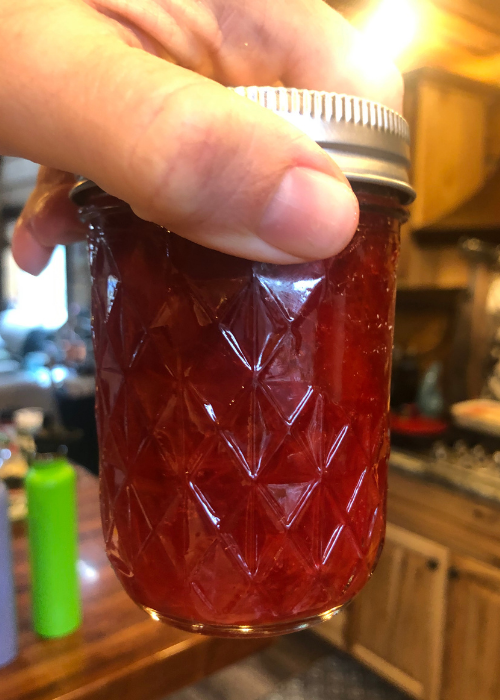
I also love and highly recommend Jill Winger of The Prairie Homestead. She demonstrates by blog and vlog many old -fashioned skills including pressure and water bath canning. Check out her blog about water-bath canning here. A food secure future definitely includes the “old fashioned” skill of home canning.
Fresh Eating
Overall, fresh-eating salad greens and spinach is best. However, greens can be preserved by canning. You can preserve fresh herbs by drying, storing whole or crushed in an airtight container. Greens are something that are easy to grow, even in your house in the middle of winter. I will be posting all about growing micro-greens inside for a delicious winter harvest soon!
How could I forget FERMENTING.
I am pretty new to lacto-fermenting vegetables myself but I have made dilly beans, sauerkraut and sour pickles . . . I LOVE it all. Those who know me well (Hi Grammy!) know how much I love pickles. . . and a big ol’ sour lacto-fermented barrel pickle is my love language. Ha!
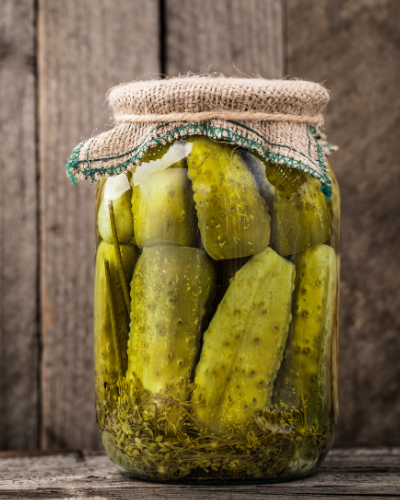
Sauerkraut, kimchi, jardinara . . . I am here for ALL of it!
Fermenting vegetables is also super easy. It is much easier than canning AND requires very few ingredients. Salt, water, a crock or glass jar and BAM you can make yourself some gut healthy veg!
Beyond preservation, lacto-fermentation has health advantages. The process creates GOOD bacteria called Lactobacillus inside the product. These beneficial organisms produce digestive enzymes as well as antibiotic and anti-carcinogenic compounds. How cool!!
The byproduct that is created when veggies are fermented is lactic acid. It keeps the veg crisp and also promotes good bacteria in our intestines. Not only digestibility but vitamin levels are higher in fermented veggies. They should be eaten more as a condiment then a main course but talk about a powerful flavor and health combo. Ferment something this year!!
Checkout this recipe for Lacto Fermented Salsa from Farmhouse on Boone blog.
How about this one for Sour Pickles from The Elliot Homestead.
NOTE: We live in GROWING HARDINESS ZONES across America. Certain plants or varieties of plants grow better in certain zones. Seed packets companies will typically tell you what hardiness zone they are designed for. Check your growing USDA Hardiness Zone by ZIP CODE here before you purchase seeds or plants.
Not exactly LOCAL but sustainable produce resources for you:
I completely understand that many of us live in areas of the world where we simply cannot grow anything or access fresh produce locally during much of the year. Here are a few options for you:
Azure Standard
This is my personal favorite option. Azure Standard is located in Oregon. It is a buying group or co-op you can sign up for with no monthly fee. Sign-up for a drop location then simply build your grocery order and pay online. You can choose to have items shipped to you for a fee or choose to pickup your order at drop locations.
My drop is once a month and you would be surprised all the places Azure drops. They are an excellent bulk buying option focusing on naturally grown food with “organic principles”. Trust me their food quality and options are impressive. They sell everything from pantry staples to dairy products, animal feed, organic produce and so much more! I have been so happy with them. CLICK HERE TO LEARN MORE ABOUT AZURE STANDARD
Thrive Market
Thrive Market has become one of my regular grocery order staples. I have ordered every thing from natural skin care and baby products, vitamins and supplements to Jovial flour and tomatoes to olive oil and olives. I’m a hug fan of their products. The only thing I don’t love is all the packaging. They do a great job keeping your products protected for shipment. They use a paper mesh instead of bubble wrap but there are a lot of plastic bags around things.
It is a monthly or yearly membership, online market focusing on organic and all natural foods. They market themselves as having top selling organic brands at wholesale prices. They do not appear to sell fresh produce but do have pantry staple options and even freeze dried fruit. CLICK HERE TO LEARN MORE AND GET 30% OFF YOUR FIRST ORDER WITH THRIVE MARKET
NOTE: by clicking on the AZURE STANDARD & THRIVE MARKET links above, I may earn a small referral commission at NO extra cost to you.
Bountiful Baskets
Bountiful Baskets is a volunteer run”purchasing community”. It works by signing up and paying a ” contribution” for a mixed basket of produce. Directors will pool money and purchase purchase bulk produce at discounted prices. The produce is then split among those who have made a contribution.
You pick up your basket at designated locations. I wasn’t unhappy with bountiful baskets but you don’t always get to pick the produce you want. You get a mixed bag of sorts. However, It did push me to try new things and recipes! There is an organic option but I have noticed most produce is just like what would purchase at a commercial grocery chain. Learn more about bountiful baskets HERE.
Forage for your Food Security during uncertain times!
It doesn’t get more local or sustainable than foraging for local herbs and veg. Before you go, check out this site for info about foraging for local edible foods. Again, one of the best things you can do is talk to a local and learn what is available to you.
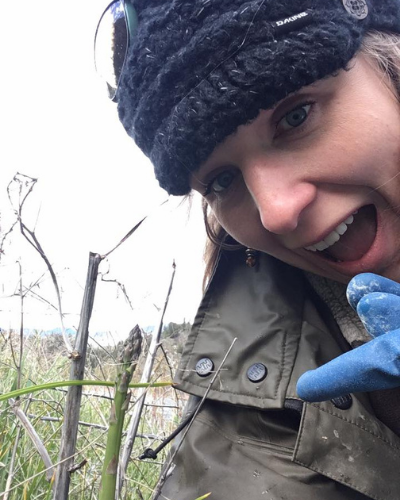
For example, every spring my family collects asparagus from a particular bank of the river near my childhood home. We have been gathering there for years. Did you know that sometimes these “secret stashes” may be kept “secret” so be respectful in your research!
Final Thoughts!
No matter where you are or what your food supply situation is, I hope you found some hope and security in this post. There is a lot we can all do to become more secure in our own food supply and less dependent on commercial and big box stores. Please don’t be overwhelmed. Maybe you pick one small change to try next month. Every step you take, no matter how small is a step in the RIGHT direction for you and your family.

Are YOU or do you know a local farmer or rancher? Drop their location and name or website in comments below. Give them some LOVE!
Pin it for later!
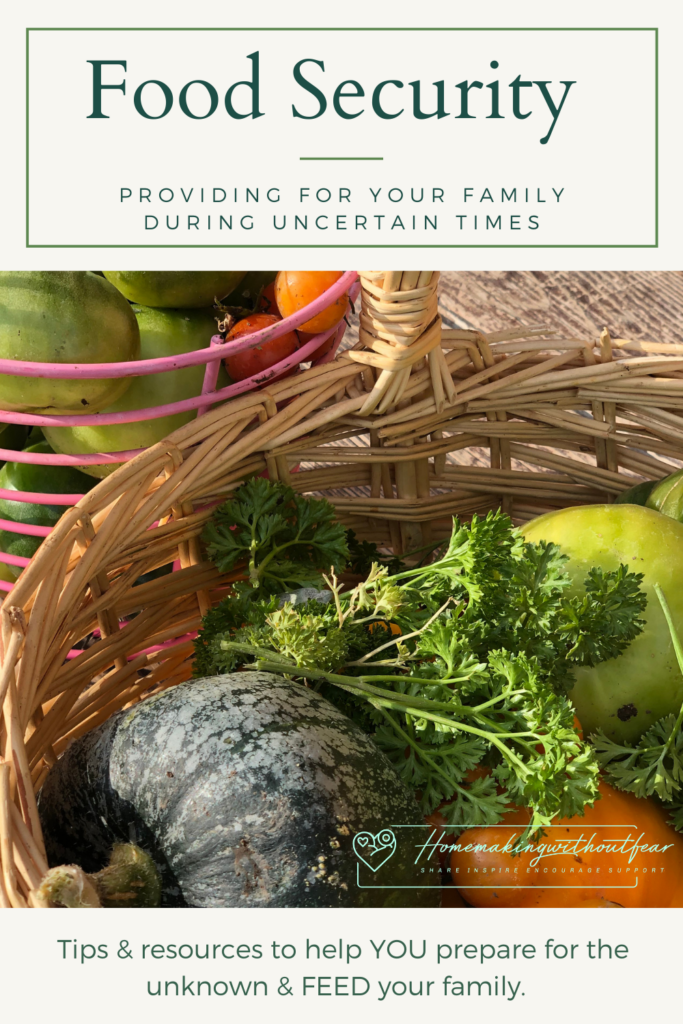

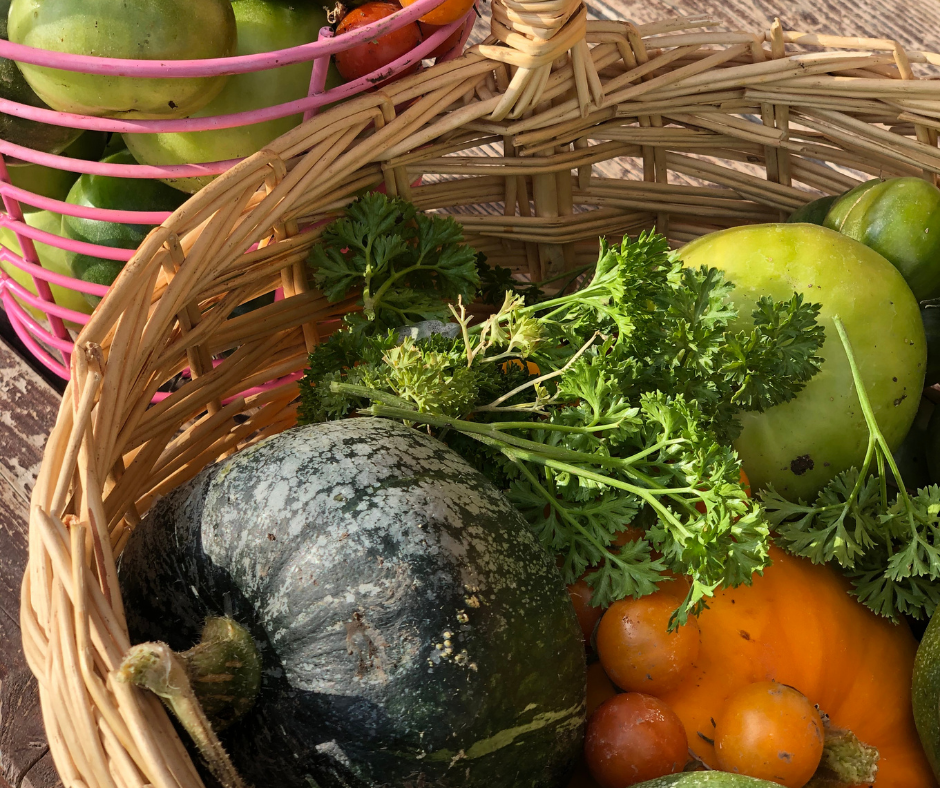
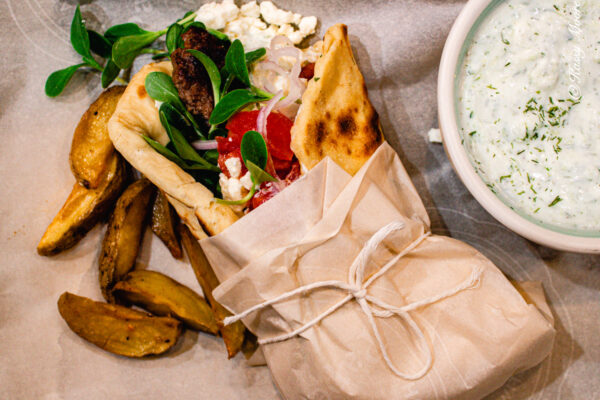
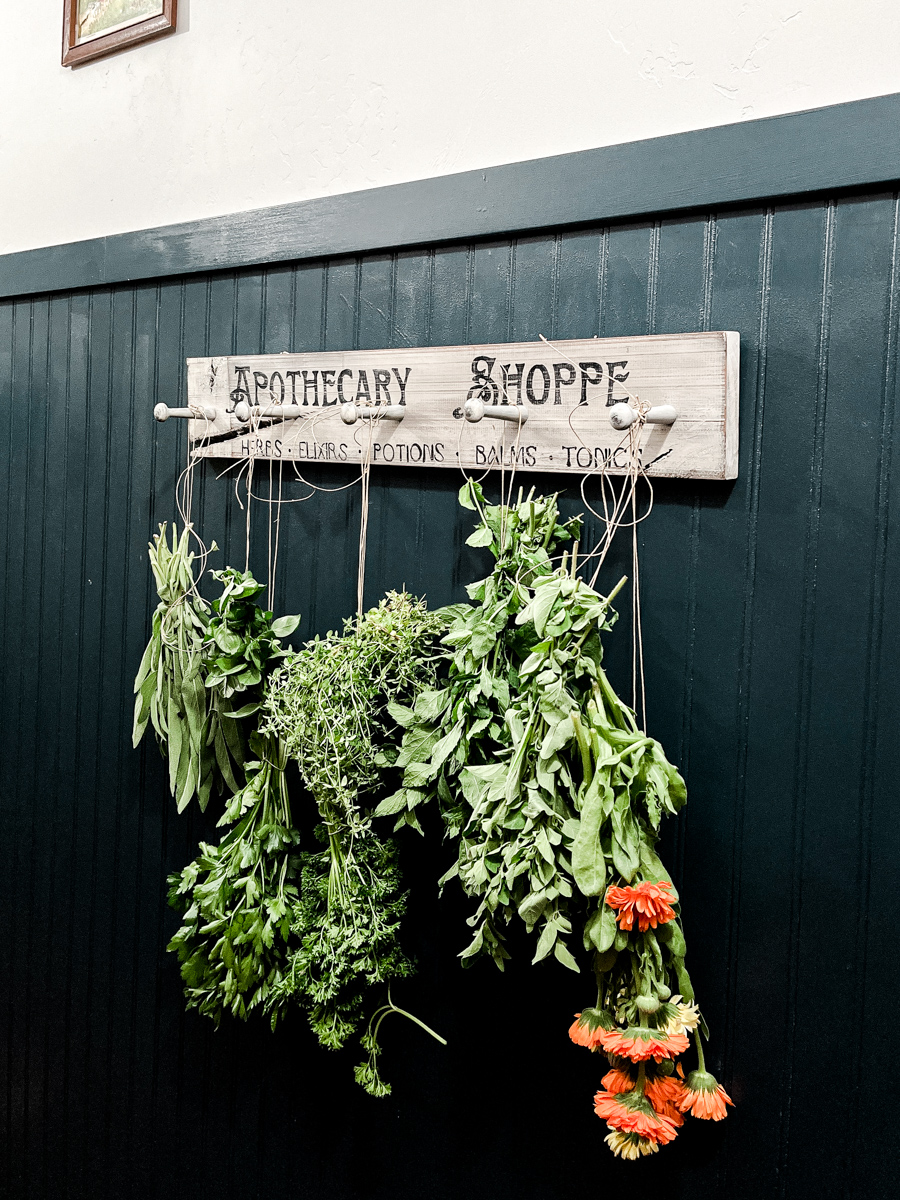
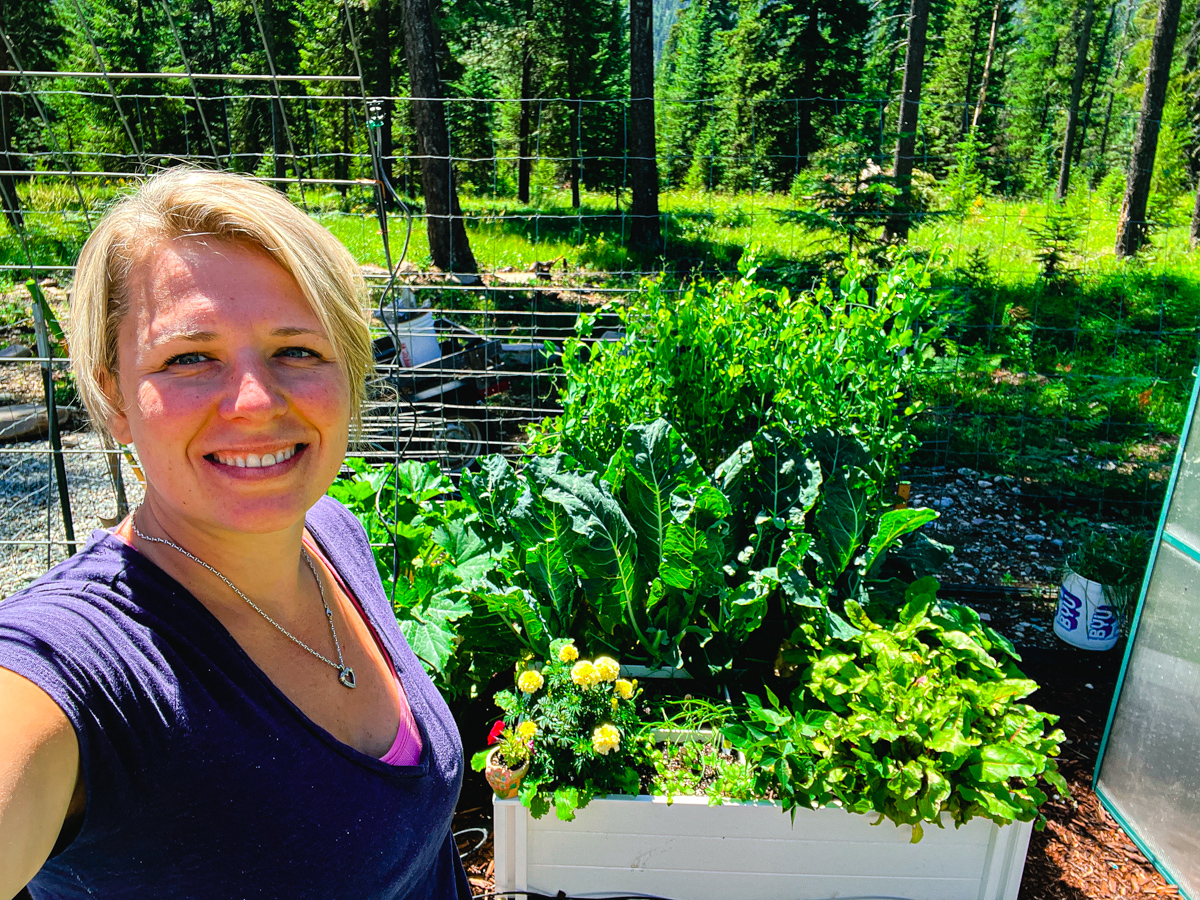

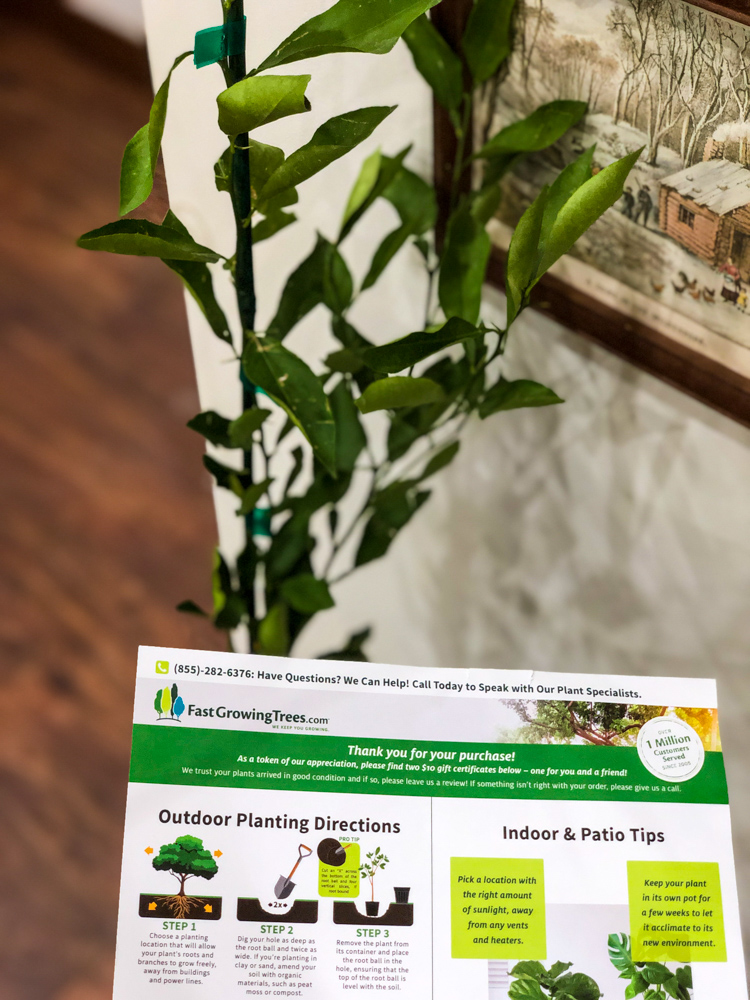


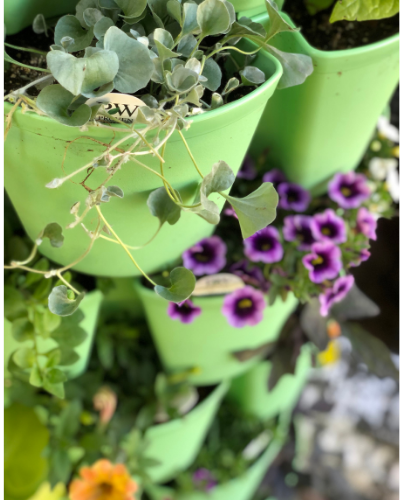
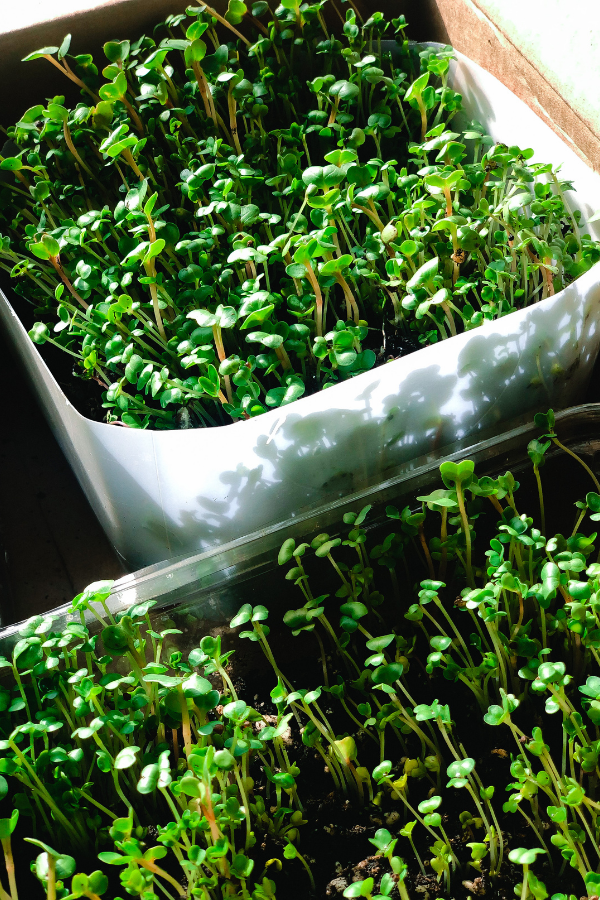
Girl !!!! This is so interesting! I want to can more this summer for sure. My girls will only eat homemade freezer jam now 😉 and my favorite thing to make and freeze is fresh pesto. It’s such a treat to pull out in the winter when we don’t have basil in the garden . I’m loving the blog already !!!! Thank you for sharing your heart. Love ya
Pesto is GREAT way to use garden veg! I have to learn to focus on what my family loves to eat. Sometimes I get carried away and can things that they just aren’t wild about. . . We all prefer freezer jam so I should do that and make less canned jam. Freezing is a great time saver for sure. Love you!!
Do you have a spam problem on this site; I also am a blogger, and I was curious about your situation; we have created some nice procedures and we are looking to swap methods with other folks, be sure to shoot me an e-mail if interested. Kathie Dwight Chaffee
Hope you are doing well. Sorry to hear about your loss. Sending prayers! Ninnette Jesse Siegler
Thank you so much and we do appreciate your prayers .
This is an awesome thing you are doing ! Love reading all the comments! Great idea child of mine❤️
Thanks Momma! Love you
Have you ever considered writing an e-book or guest authoring on other blogs?
I have a blog based on the same subjects you discuss and would love to
have you share some stories/information. I know my audience
would enjoy your work. If you’re even remotely interested,
feel free to send me an e mail.
Kay, send me your blog name and I will check it out!
Hmm is anyone else experiencing problems with the images on this blog loading?
I’m trying to figure out if its a problem on my end or if
it’s the blog. Any feed-back would be greatly appreciated.
Please let me know if you still have trouble seeing pictures on the blog. I have it optimized to load quickly so if it is not I’d be happy to look into it more.
Admiring the persistence you put into your website and in depth information you present.
It’s great to come across a blog every once in a while that isn’t the same
old rehashed information. Excellent read! I’ve
bookmarked your site and I’m adding your RSS feeds to my Google account.